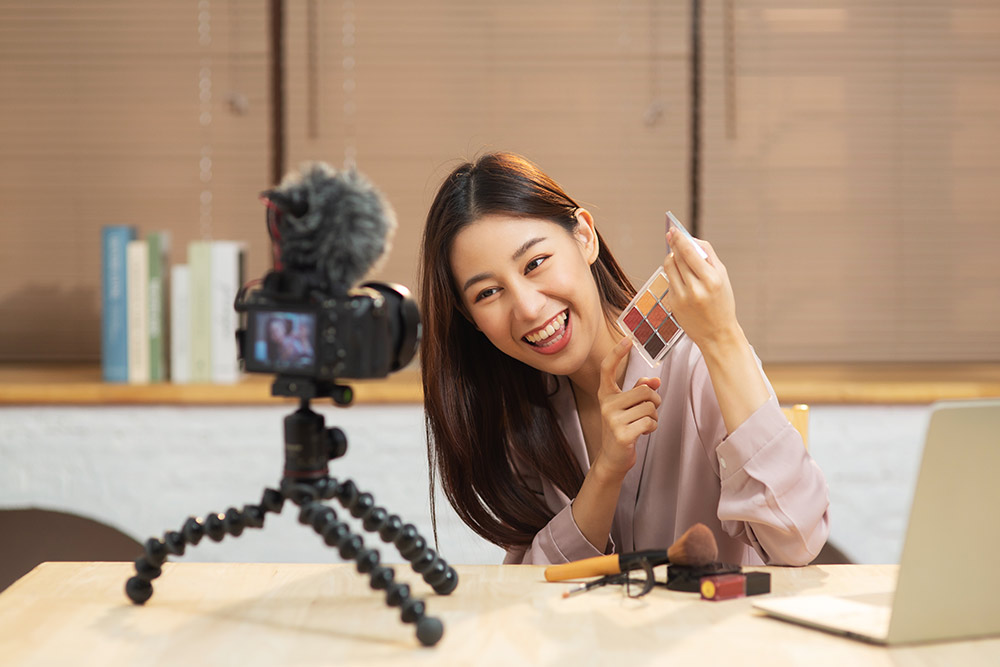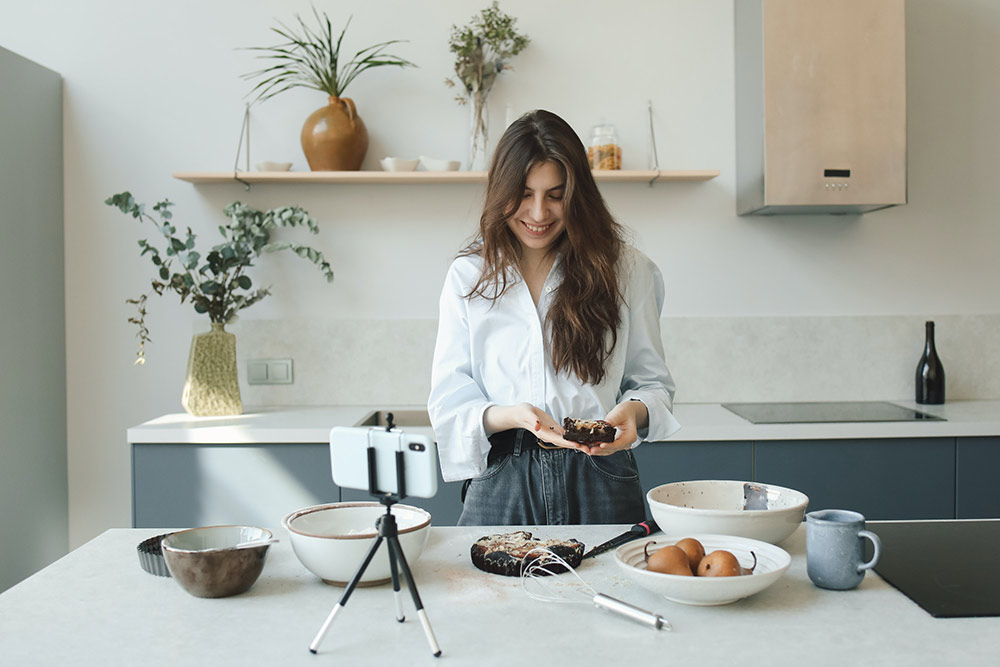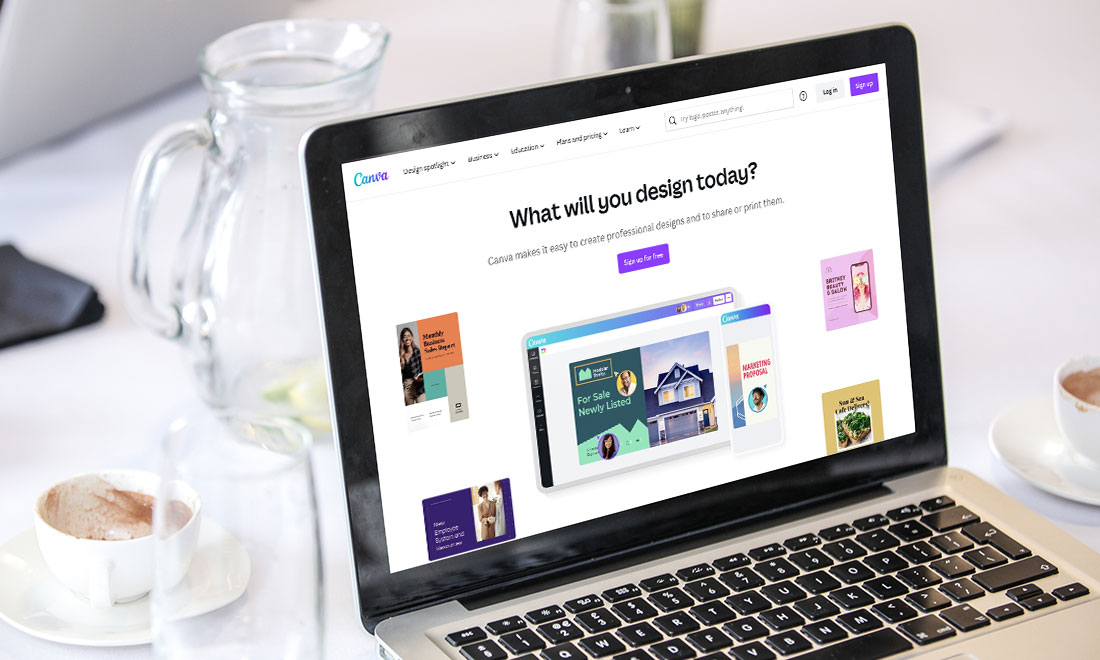The Anti-Influencer Movement: Why Businesses are Saying Goodbye to Superficial Social Media Strategies

In recent years, social media influencers have become a pervasive force in our lives. These individuals, often with huge followings on platforms like Instagram, TikTok, and YouTube, have the power to shape consumer trends, influence public opinion, and even impact political discourse. But a growing number of people are starting to push back against this influencer culture, seeking out more authentic and diverse sources of information and inspiration. This is the "De-influencing Trend," and it's quickly gaining momentum.
There are a number of reasons why people are turning away from influencers. One of the biggest is a growing awareness of the commercialization of influencer culture. Many influencers are sponsored by brands, and their posts and content are often carefully curated to promote specific products or lifestyles. This can create a sense of inauthenticity, with followers feeling like they're being sold to rather than engaged with on a genuine level.
Another factor is the pressure that influencer culture can put on people to conform to a certain image or ideal. Many influencers present highly stylized, filtered versions of their lives that can be hard for their followers to emulate. This can create feelings of inadequacy or low self-esteem, especially among younger followers who are still developing their sense of self.
Despite these concerns, influencers still hold a lot of sway over public opinion. For example, a recent survey found that 63% of millennials and Gen Z consumers trust influencers more than traditional advertising, and 58% have made a purchase based on an influencer recommendation. However, these figures may be starting to shift as more people become aware of the downsides of influencer culture.

So, what are people doing to de-influence themselves? One common approach is to seek out more authentic and diverse sources of information and inspiration. This might include following bloggers and content creators who are more focused on lifestyle or DIY content, rather than promoting specific products. It could also mean engaging with smaller or niche communities, where people can connect with others who share their interests or values.
Another approach is to take a break from social media altogether. This can be a powerful way to re-center and re-connect with one's own thoughts and values, without the constant pressure to compare oneself to others. A recent survey found that 39% of Gen Z consumers are planning to take a break from social media in 2022, up from 27% in 2021.
Of course, not everyone is on board with the de-influencing trend. For some people, influencers provide a valuable source of inspiration and connection. They may appreciate the aspirational nature of influencer content, or enjoy being part of a larger community of like-minded people.
At the same time, it's worth noting that not all influencers are created equal. Some are more transparent about their sponsorships and partnerships, and make an effort to engage with their followers in a more authentic way. Others may prioritise diversity and representation in their content, or use their platform to advocate for important causes. It's possible to be an influencer and still be a positive force for change.
Ultimately, the de-influencing trend is about striking a balance between engaging with influencers in a healthy, sustainable way, and seeking out other sources of information and inspiration that align with our own values and interests. It's about recognizing that influencers are just one part of a larger media landscape, and that there's value in seeking out more diverse perspectives and experiences.
Isn’t This A Recent Thing?
Yes, you are definitely right there. The "De-influencing Trend" is a relatively recent phenomenon, emerging in response to the rise of social media influencers and the growing influence they hold over our lives. However, it has its roots in a longer history of consumer culture and media manipulation.
One of the earliest examples of influencer culture can be traced back to the 1920s, with the rise of Hollywood celebrities as icons of style and glamour. These stars were often used to promote products and lifestyles to the masses, creating a sense of aspirational consumerism that still exists today.
In the 1950s and 60s, television emerged as a powerful medium for advertising, with brands using popular TV shows to promote their products and create a sense of brand loyalty. This paved the way for the modern era of influencer marketing, where social media influencers have replaced TV stars as the primary source of consumer inspiration.
The rise of social media in the 2000s and 2010s further accelerated the growth of influencer culture, with platforms like Instagram and YouTube providing a way for ordinary people to become famous and influential. These platforms allowed individuals to build huge followings by creating and sharing content that resonated with their audiences, often centred around specific niches or interests.
The influencer landscape has continued to evolve in the years since, with new trends and technologies emerging all the time. For example, the rise of "micro-influencers" has seen a shift towards smaller, more niche influencers who may have fewer followers but are seen as more authentic and trustworthy by their audiences. At the same time, emerging technologies like augmented reality and virtual influencers are poised to disrupt the influencer landscape even further.

Despite the ongoing evolution of influencer culture, there has been a growing pushback against its commercialization and inauthenticity in recent years. This has manifested in the form of the de-influencing trend, which seeks to reduce people's reliance on social media influencers and seek out more authentic and diverse sources of information and inspiration.
One key moment in the emergence of the de-influencing trend came in 2018, when the Fyre Festival debacle brought the darker side of influencer culture into sharp focus. The festival, which was heavily promoted by influencers like Kendall Jenner and Bella Hadid, turned out to be a complete disaster, leaving attendees stranded on a remote island without food or shelter. The event was widely seen as emblematic of the superficiality and inauthenticity of influencer culture, and sparked a backlash against the role of influencers in shaping consumer trends.

Since then, the de-influencing trend has continued to gain momentum. In 2019, Instagram began testing a feature that would hide likes from users' posts, in an effort to reduce the pressure on people to constantly seek validation and engagement from their followers. This move was seen as a tacit acknowledgement of the negative effects of influencer culture on mental health and self-esteem.
The COVID-19 pandemic also played a role in the rise of the de-influencing trend, as people spent more time at home and sought out more meaningful sources of connection and inspiration. This led to a resurgence of interest in DIY and sustainability content, as people looked for ways to connect with their communities and reduce their reliance on consumerism.
Today, the de-influencing trend is continuing to evolve in response to new challenges and opportunities. For example, the rise of "cleanfluencers" has seen a new wave of influencers promoting sustainable and eco-friendly lifestyles, while the ongoing growth of influencer marketing has led to increased scrutiny and calls for greater transparency and accountability.
So, There Are Benefits To This Trend, Right?
The de-influencing trend is a response to the negative aspects of influencer culture, but it also offers a range of advantages and benefits for those who embrace it. Here are just a few reasons why de-influencing can be a positive force in our lives:
Increased authenticity and self-awareness

One of the key benefits of de-influencing is that it encourages us to think more critically about the media we consume and the values we hold. By reducing our reliance on influencers, we can become more self-aware and develop a more authentic sense of self. This can lead to greater confidence and a stronger sense of purpose in life.
Greater diversity and inclusivity
De-influencing can also help us to discover new voices and perspectives that we may not have encountered otherwise. By seeking out a wider range of content creators and sources of inspiration, we can become more aware of the diversity of human experience and develop a greater appreciation for different cultures and viewpoints.
Reduced pressure to conform
Influencer culture can be highly conformist, with certain styles, brands and lifestyles promoted as the ideal. By de-influencing, we can break free from this pressure to conform and develop a more individualistic sense of style and taste. This can lead to greater creativity and self-expression in our lives.
Greater focus on personal values
De-influencing can also help us to focus more on our personal values and priorities, rather than being swayed by external pressures. By seeking out content that aligns with our own values, we can develop a more meaningful and fulfilling sense of identity and purpose in life.
Improved mental health and wellbeing
The de-influencing trend has been linked to improved mental health and wellbeing, as people reduce their exposure to the constant barrage of advertising and social comparison that can come with influencer culture. By seeking out more authentic and meaningful sources of inspiration, we can improve our sense of self-worth and reduce feelings of anxiety and depression.
More sustainable and ethical choices
De-influencing can also encourage us to make more sustainable and ethical choices in our lives. By reducing our reliance on consumerism and materialism, we can become more mindful of our impact on the planet and on other people. This can lead to a greater sense of social responsibility and a desire to create positive change in the world.
More meaningful connections with others

Finally, the de-influencing trend can help us to build more meaningful connections with other people. By seeking out communities and content creators who share our interests and values, we can develop a stronger sense of belonging and connection. This can lead to increased social support, reduced loneliness and a greater sense of happiness and fulfilment in life.
Great, What Do I Have To Know About De-Influencing?
As the de-influencing trend gains momentum, more and more businesses are looking to embrace this approach to social media marketing. While de-influencing can offer a number of benefits, it's important for business owners to take note of some key considerations before implementing this strategy.
Marketing may change
One of the most important considerations is understanding the impact that de-influencing can have on your existing marketing strategy. While de-influencing can create a more authentic and engaging social media presence, it may also require a significant shift in your marketing approach. As such, it's important to assess the potential benefits and drawbacks of de-influencing before making any significant changes to your social media strategy.
Have clear goals

Another key consideration is setting clear goals and objectives for your de-influencing efforts. This may involve defining what success looks like for your business, setting specific targets for engagement and reach, and identifying the metrics that will be used to measure progress. By setting clear goals and objectives, you can ensure that your de-influencing efforts are aligned with your overall business strategy and are contributing to your bottom line.
Ethical transparency
Being transparent and ethical can’t be stated nor emphasised on nearly enough…especially so in your social media marketing practices. This means being upfront about any partnerships or collaborations with influencers, disclosing any sponsored content, and adhering to ethical and sustainable practices throughout your supply chain. Transparency and authenticity are key principles of the de-influencing trend, and failing to adhere to these values can have a negative impact on your brand reputation.
Burning bridges
It's also important to consider the potential impact of de-influencing on your relationships with existing influencers. While moving away from influencer-driven content may be necessary to embrace the principles of de-influencing, it's important to handle these relationships with care and respect. This may involve communicating clearly with influencers about your decision to shift your social media strategy, exploring alternative partnership opportunities, and being transparent about your reasoning and goals.
Tracking stats
Finally, it's important to regularly evaluate the success of your de-influencing efforts and make adjustments as needed. This may involve tracking engagement metrics, monitoring feedback from customers, and assessing the impact of your partnerships with influencers and other organisations. By staying flexible and open to feedback, you can ensure that your de-influencing efforts are having a positive impact on your brand and are contributing to your overall marketing strategy.
Any Tools I Could Use?
As businesses look to embrace the de-influencing trend, there are a number of tools and resources that can help them to implement this approach effectively. From social media monitoring and content creation platforms to influencer identification and customer engagement tools, there are a range of options available to help businesses make the most of their de-influencing efforts.
Social media monitoring
One key tool for businesses looking to embrace de-influencing is a social media monitoring platform. These platforms can help businesses to track mentions of their brand across social media, monitor engagement metrics, and identify emerging trends and conversations. By gaining insights into the conversations happening around their brand and industry, businesses can make more informed decisions about their social media strategy and identify opportunities to engage with their audience in a more authentic and meaningful way.
Content creation station

Another important tool for de-influencing is a content creation platform. These tools can help businesses to create high-quality, engaging content that resonates with their target audience. By focusing on user-generated content and emphasising authenticity and inclusivity, businesses can create a more engaged and loyal community on social media. Some popular content creation platforms include Canva, Hootsuite, and Sprout Social.
Influencer identification
When it comes to identifying influencers to work with, businesses can turn to influencer identification and management tools. These platforms can help businesses to find influencers that align with their values and brand messaging, track their engagement and reach, and manage relationships with influencers throughout the partnership process. Popular influencer identification tools include Klear, AspireIQ, and Upfluence.
Engagement
Customer engagement tools can also be a valuable resource for businesses looking to embrace de-influencing. These tools can help businesses to engage with their audience in a more authentic and meaningful way, building a loyal and engaged community on social media. From chatbots and personalised messaging to social listening and customer feedback tools, there are a range of options available to help businesses build strong relationships with their customers online from chatbots to even customer feedback tools.
In addition to these specific tools, there are a number of broader considerations that businesses should keep in mind when implementing de-influencing. For example, it's important to focus on building a strong brand identity and messaging that aligns with the principles of de-influencing. This may involve emphasising transparency and authenticity, promoting diversity and inclusivity, and adopting ethical and sustainable practices throughout the supply chain.
It's also important to remember that de-influencing is not a one-size-fits-all approach. Different businesses will have different goals, audiences, and challenges to contend with when implementing this strategy. As such, it's important to remain flexible and open to feedback, regularly evaluating the success of your de-influencing efforts and making adjustments as needed.
Closing Words
De-influencing can be a powerful strategy for businesses looking to build more authentic and meaningful relationships with their customers. By focusing on building trust, fostering genuine connections, and prioritising customer needs over profit, businesses can create a more positive and sustainable social media presence that resonates with their audience.
While de-influencing may seem daunting at first, it is ultimately a rewarding and worthwhile investment. By embracing this trend, businesses can not only improve customer engagement and loyalty but also contribute to a larger cultural shift towards more ethical and responsible marketing practices.
However, it's important for businesses to approach de-influencing with care and thoughtfulness. Before implementing any changes, businesses should carefully evaluate their current social media practices, consider their goals and values, and engage in meaningful conversations with their audience to ensure that their actions align with their customers' needs and expectations.
Additionally, businesses should make use of the various tools and strategies available to them, such as chatbots, social listening tools, customer feedback tools, personalisation tools, and gamification tools, to enhance their customer engagement efforts and create a more engaging and personalised experience for their customers.
Finally, businesses should remain flexible and open-minded in their approach to de-influencing. The social media landscape is constantly evolving, and what works today may not work tomorrow. By staying attuned to their customers' needs and adapting to new trends and technologies, businesses can continue to build meaningful relationships with their audience and thrive in an ever-changing digital world.

